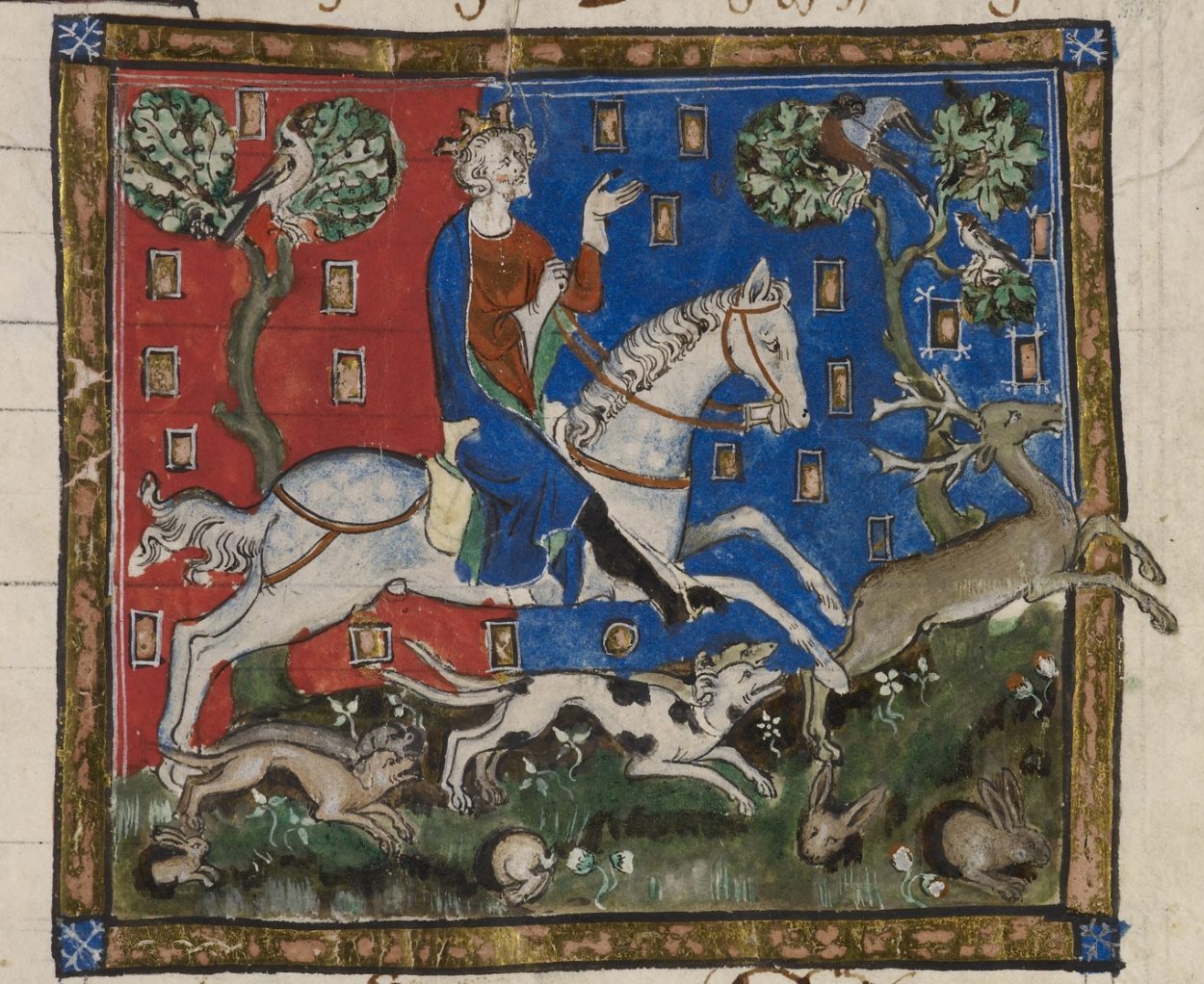John was born in 1166 at Beaumont Palace in Oxford, England, and was the youngest son of Henry II and the Duchess Eleanor of Aquitaine.
His early youth was spent at Fontevraud Abbey in the former French duchy of Anjou, a period during which his parents may have harboured aspirations for him to pursue a religious vocation.
Despite this, John grew up gaining a reputation as a gambler, having a fondness of wine, and a desire for collecting fine jewellery and opulent clothing. Some accounts describe him as “biting and gnawing his fingers” in anger, and moments of rage and jealously.
Upon his older brother, Richard I, ascending to the throne in 1189, John was appointed as the Count of Mortain and married Isabella of Gloucester. Richard at the time was raising funds for the Third Crusade, so bestowed John with estates in Lancaster, Cornwall, Derby, Devon, Dorset, Nottingham, and Somerset with the intent on securing John’s loyalty in his absence.
John however, sowed seeds of dissension and declared his brother dead, when in fact Richard had been captured on returning to England and was being held for ransom by Emperor Henry VI at Trifels Castle in Germany. John used a rising English prejudice against foreigners and revolted against Richard’s rule by colluding with King Philip II of France.
Emperor Henry VI demanded a ransom of 150,000 marks for Richard’s release, which John and Philip tried to prevent by offering 80,000 marks as a bribe to hold Richard prisoner until Michaelmas.
Upon Richard’s return, John was forgiven and would remain loyal for the remainder of Richard’s reign. John actively took part in several campaigns against Philip to recover lost territories in France and restore the Angevin Empire.
Following Richard’s passing in 1199, two contenders emerged for the Angevin throne: John, whose claim was based on being the only surviving son of Henry II, and young Arthur I of Brittany, who asserted his claim as the son of John’s elder brother, Geoffrey.
John garnered the support of the majority of the English and Norman nobility, and he was crowned at Westminster Abbey with the backing of his mother, Eleanor.
Meanwhile, Arthur received support from the majority of the Breton, Maine, and Anjou nobles, and he also gained the backing of Philip, who remained steadfast in his commitment to dismantle the Angevin territories on the continent.
A treaty (The Treaty of Le Goulet) was agreed between John and Philip, in which Philip would support and recognise John’s claim, in return, John agreed to recognise Philip’s right as the legitimate feudal overlord of John’s lands in France, earning John the nickname of “John Softsword” from some English chroniclers.
Peace between John and Philip lasted only two years, resulting in John losing the Duchy of Normandy and most of his other French lands to Philip. This resulted in the collapse of the Angevin Empire and contributed to the subsequent growth in power of the French Capetian dynasty.
The ensuing wars led to a growing tension between John and the barons of England, who began organising resistance in the north and east of England to his rule.
John convened a council in London to deliberate potential reforms and facilitated discussions in Oxford between his representatives and the rebels throughout the spring. Historians believe that John was stalling for time until he could receive papal support from Pope Innocent III.
Letters of support arrived from the Pope, but by that time the barons had organised and renounced their feudal ties with John. The barons marched on London, Lincoln and Exeter, forcing John to negotiate a peace settlement at Runnymede, which would later become known as the Magna Carta, or “Great Charter”.
Magna Carta promised the protection of church rights, protection for the barons from illegal imprisonment, access to swift and impartial justice, and limitations on feudal payments to the Crown. John however, appealed to the Pope, claiming that Magna Carter was “not only shameful and demeaning, but illegal and unjust” and had the barons excommunicated.
The barons once again organised and seized Rochester Castle, however, John was prepared with an army of mercenaries and rallied the support of the marcher lords and their feudal forces. John retook Rochester Castle and then split his forces to attack the estates of the northern barons and the north side of London and East Anglia.
The barons responded by offering the crown to Prince Louis of France, who had a claim by virtue of his marriage to Blanche of Castile, a granddaughter of Henry II. Louis landed in Kent unopposed and joined forces with the barons to take the south-east of England and parts of the north.
In 1216, John contracted dysentery and died in October at Newark Castle in Nottinghamshire. He was buried in Worcester Cathedral in front of the altar of St Wulfstan.
Despite John being described as “one of the worst kings ever to rule England”, his signing of the failed Magna Carter has left the unintentional legacy of providing the foundations of the constitutional development of England.
Header Image Credit : British Library – CC0 1.0 Universal





